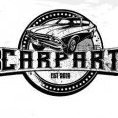-
Welcome to Auto Parts Forum
Whether you are a veteran automotive parts guru or just someone looking for some quick auto parts advice, register today and start a new topic in our forum. Registration is free and you can even sign up with social network platforms such as Facebook, X, and LinkedIn.
Selling Tools for Underhood Repairs
-
Similar Topics
-
By CarPartAU
Are you looking for some stores to buy used or new car parts? If so, then Car Part is the place for you. Rather than sharing a limited list of stores, we at Car Part have come with the list of the best link hidden, please login to view. These sites will connect you with a large number of car part sellers across Australia. Without wasting much time, fill out the form and click send a request button. To know more, visit us today.
-
By Dorman Products
Before selling a vehicle, make sure to remove personal data from the infotainment system
-
By Counterman
TechShop’s Tool Time Podcast Series highlights tool and equipment trends, combined with an educational focus on technology that brings solutions to shop owners and techs as they address the growing complexity of vehicle repair. In this episode, Nadine Battah and Eric Garbe sit down with CTA Tools’ Alex Borghard and Alberto Roldan to discuss the specialty tools their company offers.
It’s important to stay current, or even ahead of demand in the industry, and Alex Borghard tells the hosts about the challenges of doing so.
“As anyone who works in the automotive industry knows, it’s constantly changing,” explains Borghard, VP of marketing and business development for CTA Tools. “Whatever products we might sell today, there is a very strong chance that in 10-15 years from know, those products will no longer be in demand because the vehicles may no longer be on the road. That gives us the challenge to really stay on top of things and know what is in demand today and might be down the road.
link hidden, please login to view The post
link hidden, please login to view appeared first on link hidden, please login to view.
link hidden, please login to view
-




Recommended Posts
Join the conversation
You can post now and register later. If you have an account, sign in now to post with your account.
Note: Your post will require moderator approval before it will be visible.